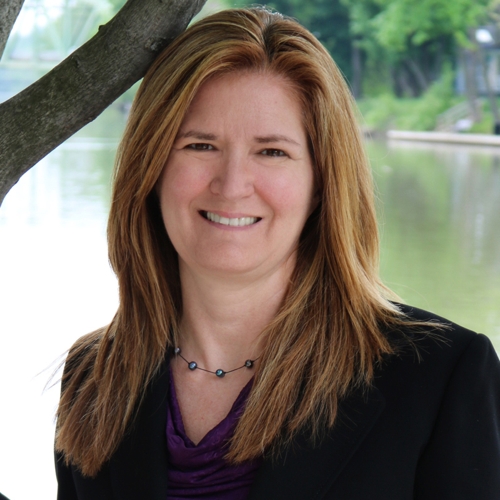Building a Forward-Thinking Business Strategy, with Nicole Mahoney
Episode 196
In Destination on the Left’s solocast episode, we share the process that our team recently developed to reset our forward-thinking mindset. We found that when you challenge yourself and your team to move past the perceived limitation of uncertainty and stay focused on the future, many opportunities will appear. This solocast will discuss our company’s experience and the tools we used to get back on track during the pandemic’s challenging times.
What You Will Learn in This Episode:
- How to assume a solutions-oriented, forward-thinking mindset during this challenging pandemic
- The meeting agenda we use for our team strategy meeting
- How to implement the processes from Gino Wickman’s “Traction” in your own organization
- The benefits of performing a SWOT analysis to generate forward-focused questions that guide your team’s discussion
- How to use Traction’s IDS process to solve unique business problems that arose during your strategy meeting
- How to create a forward-focused gameplan and define every team member’s role so you can execute with maximum efficiency
Working Together to Plan for the Future
In this Destination on the Left solocast episode, we share the process that our team recently developed to reset our forward-thinking mindset. We found that when you challenge yourself and your team to move past the perceived limitation of uncertainty and stay focused on the future, many opportunities will appear. This solocast will discuss our company’s experience and the tools we used to get back on track during the pandemic’s challenging times.Strategic Meeting
One of the first pieces of our process is the meeting strategy. Using techniques from Gino Wickman’s book Traction, we run through financials, new projects, accomplishments, upcoming projects, and our current business plan that was updated in May. Our business plan depicts the Traction model, which includes our core values, mission, vision, marketing strategy, and 3-year picture. This segues into a SWOT analysis (strengths, weaknesses, opportunities, and threats). From there, we move to forward-focused questions segment about our team and performance as an organization. Then, we used those questions to identify goals that will carry us through the end of the year and into 2021.Identify and Solve Your Issues
The IDS format is another Traction piece that we have used to maintain a forward-thinking mindset. With this method, you first identify the problem you want to solve, then collect feedback from your team, and work together to figure out the best solution. In our case, it was whether or not to renew our lease given the current circumstances of COVID-19. We weighed the pros and cons of working from home, and the IDS process prevented us from talking in circles so we could reach a solution. Once everyone on your team understands the gameplan and knows their role in how you’re going to move forward, you will build momentum fast.- Email: nicole@breaktheicemedia.com
- Website: https://breaktheicemedia.com/
- Twitter: @Break_TheIce
- Facebook: @BreakTheIceMedia
Nicole Mahoney: 00:17 Hello listeners. This week’s episode is my third solo cast episode. Since the coronavirus pandemic began in the U S it’s the end of summer 2020 and summer travel was not what it usually is. Many of us spent the summer closer to home, perhaps taking day trips, short driving getaways, or even staycations. For many others, we were focused on reopening our businesses. And the idea of taking a day off may have seemed laughable. And for others, summer may have meant more furloughs or layoffs, more uncertainty about the future. More questions about when things will return to normal. It has not been easy. Our industry has been hit hard, but our resiliency, creativity and innovation has been shining through all along. I wanted to take the opportunity to check in and remind you that you are all awesome professionals, advocates for our industry contributors, to a better life for so many who choose to travel.
Nicole Mahoney: 01:27 You help hold up. Communities offer places for people to relax, provide jobs and create better places to work, live, and play. We are six months into this world pandemic, and we all recognize this is not a short term crisis. It is a marathon and we need to keep ourselves healthy physically and mentally taking time out to relax and reflect. We need to remember what we love about our industry and stay focused on the future. And my first solo cast, just after the pandemic started in the U S I talked about the importance of keeping a forward thinking mindset today, and a weekly newsletter that I subscribed to called Friday forward from Robert Glazer. He described a leader with a forward thinking mindset, as someone who quote, that’s a compelling vision for the future attracting and convincing others to want to join their movement. These leaders are capable of sharing their vision with clarity and specificity, and they are passionate about the execution of those goals and quote.
Nicole Mahoney: 02:42 When you adopt a forward thinking mindset, it is easier to see the possibilities instead of roadblocks, you start to see opportunities and a path forward. I know it is hard to have a vision for the future with so much uncertainty ahead, but I have found when you challenge and your team to move past the perceived limitation of uncertainty and stay focused on the future, many opportunities will appear. I’m going to share with you the process that my team and I recently went through to reset our forward thinking mindset. But first I have this important message that I’d like to share with you. Okay? We are back to finding our forward thinking mindset. During these uncertain times, I am going to share the experience of my company and the tools that we used to get us all on track and full transparency. I’m going to share with you our meeting agenda for our strategy meeting, which I will provide a link to in the show notes of this episode.
Nicole Mahoney: 03:44 Perhaps you can use this as a format for your own forward-thinking strategy meeting. My leadership team recently met for our quarterly strategy meeting. We were struggling with finding our forward-thinking focus. The company has gone through so much change and innovation in the last six months, the goals and plan that we had in place in January, we’re no longer relevant or were they, we just weren’t sure. The first thing on every meeting agenda is a segue. This is a meeting strategy that we learned from traction and entrepreneurial operating system that was created by Gino Wickman. And we adopted three years ago. I’ll include a link to Geno’s book in the show notes. The segway gets everyone in the meeting, focused on the meeting. It is a tool that helps pull people away from whatever they were thinking about or working on before entering the meeting room for our segue.
Nicole Mahoney: 04:45 We asked each participant to answer three questions, best business news in the last 90 days, best personal news in the last 90 days and expectations for today’s meeting, we open on a positive. This helps everyone get into the right frame of mind for a forward thinking discussion. Everyone’s answers to the meeting. Expectations question are captured on flip chart paper and kept for reference. At the end of the meeting next as CEO, I reviewed where we have been over the last quarter, we reviewed financials, new projects, accomplishments, upcoming projects, and our current business plan that we created in January and updated in may. Our business plan is one slide and follows the traction model. That includes our core values, mission, vision, marketing strategy, and three year picture for this meeting, we decided to go through a SWOT exercise. This is something we typically do at the end of the year, but we felt since the pandemic has changed our industry and the world in so many ways, we didn’t want to wait to analyze our strengths, weaknesses, opportunities, and threats.
Nicole Mahoney: 06:00 Each member of the leadership team filled out a worksheet, identifying these areas for our company. I will share the worksheet and the show notes for this episode. Once everyone filled out the SWAT worksheet, we shared what we had come up with capturing everyone’s input on flip chart paper. Next, we looked for common themes and areas that stood out and circled those. For later in the meeting, after the SWAT exercise, we moved on to forward focused questions. We went through each of these questions, one by one, and captured our answers on the flip chart. In case you don’t have a pen and paper handy, you will find these questions on our meeting agenda in the show notes. The questions that we answered are what went well in the last quarter. What has made it go well? What is our objective over the next quarter? What are the benefits in moving forward in these areas?
Nicole Mahoney: 07:00 Is there anything else we need to consider to move closer to our goals? What else may we do to move closer to those goals? With the answers to these questions, we were ready to identify our goals that will carry us through the end of the year and into 2021, staying in a forward thinking mindset, made all of the difference to gaining clarity around what we should do. Next. It gave us a common understanding of where the company is going. Even during these uncertain times, and this conversation provided the momentum we needed, carry us there. Our meeting didn’t end there. However, we had two issues that we identified before. The meeting that we wanted to spend time discussing and traction. This section of the agenda is called IDs because the system that we follow to solve our issues begins with identifying the issue, discussing the issue, and then solving the issue.
Nicole Mahoney: 07:57 The two issues that we included on our strategic agenda included the question of renewing our lease, which is up at the end of the year and whether or not we wanted to get back to the office or continue a work from home structure. The second issue that we wanted to discuss related to the ongoing conversation around equality and diversity, one of our core values is equitable. And we wanted to do a deep dive into this value to check ourselves and how we are measuring up to living that value and to identify areas where we can improve. I am planning a solo cast about our equitable core value and this conversation from our meeting that will air in October. So for today, I thought it would be helpful to share our process for tackling the work from home and renewing the lease conversation. No many organizations and companies are debating this issue.
Nicole Mahoney: 08:50 Following the IDs format, we first had to identify the issue we wanted to solve. If our five year lease was not up for renewal, I don’t know if we would have had the same conversation, but since we have a choice to make, we wanted to talk about the option of continuing to work from home, the issue to solve was do we renew our lease? So first we identified the issue and the issue was, do we renew our lease in order to tackle this question in our leadership meeting, we wanted to collect feedback from the team that could help our discussion of the issue. So our VP of operations called each of our employees individually to talk to them about what they liked. And didn’t like about working from home. We have an eight person team making this one on one call, a little easier to manage.
Nicole Mahoney: 09:41 I know larger companies have conducted surveys of their teams to find out the same information. A survey also allows for employees to respond anonymously and may provide more unfiltered feedback to organize our discussion. We decided to use a pros and cons format with the feedback in hand, our leadership team created a list of pros and cons of working from home. I will include a copy of our list of pros and cons in the show notes section of this episode, by making this list, it was easy for easier for us to have a discussion and weigh our options without the visual of the list. We may have talked ourselves in circles, discussing why we want to continue to work from home and what we miss about the office. Once we exhausted our list of pros and cons, we moved on to solving the issue. In the end, we realized that the majority of the cons to working from home could be corrected if it were a permanent work set up and not just considered temporary, the pros outweighed the cons.
Nicole Mahoney: 10:45 Not because the list was longer, but because the pros seem to be weighted more and the majority of the cons could be addressed. The biggest pro that swayed our decision towards giving up the office was the opportunities that could open up from not being tied to a lease. It’s not just the money. We will save by not paying rent, but also the opportunity to explore a new workspace that could better meet our needs as our company continues to evolve through the pandemic. So our solution to the issue do we renew our lease was to give up the lease that ends on December 30, first, 2020. We decided that we will work from home for 2021 while we explore our new ways of work. Now, we have many decisions to make as we go in this new direction and we will tackle those. If future leadership team meetings, we meet weekly and we will use the same system of IDs or identify, discuss, and solve to move us towards a permanent work from home workplace.
Nicole Mahoney: 11:49 By the end of the year, next on our forward thinking strategy meeting agenda, we reviewed all of the work we had accomplished and identified next steps along with assigning them to someone to move that decision forward. It is always gratifying to see the flip chart paper that summarizes all of the work we did in our meeting, from our meeting expectations to our SWAT, to our forward thinking questions to our IDs. We had a lot to review and summarize, making sure we take the action items and assign them next steps keeps our work moving forward to wrap up the meeting. Everyone answered the following questions, which keep us all thinking forward. And in motion, this has been a big key to our ability to chart these uncertain times. The questions that everyone answered were, what will you keep doing? What will you stop doing? What will you start doing?
Nicole Mahoney: 12:49 How will you measure your success and were your meeting expectations met? And then each of us rates the meeting on a scale of one to 10, this is a best practice from traction. The purpose of the rating is to assess whether or not the meeting was efficient and productive. We rate all of our meetings on this scale and it helps us stay focused and keeps us from having meetings that seem to be a waste of time for this meeting. We all gave it a 10. Thank you for listening. I hope what I have shared can help you and your team move forward through uncertainty and build back better. We know the same plans that have worked for you in the past will not be the plans that will work now or in the future. Now is the time to be strategic, to start planning for the future and to adopt a forward thinking mindset.
Nicole Mahoney: 13:45 Take a few minutes and think through your next steps. Take action. And together we will build back better, stay safe, and stay healthy. And we’ll see you next week with another fantastic guest. Thank you for listening all the way to the end of this week’s episode. This gives me a chance to ask you for a favor. We have a goal to reach 100 ratings and reviews on our podcast. By the end of 2020, we are already well on our way to meeting this goal, but need your help. I love sharing my interviews with you, and if you enjoy them too, I would a greatly appreciate you giving us a rating and review click the iTunes or Stitcher link on destination on the left.com or leave one right in your favorite app where you listen most often, it only takes a minute and your support means a lot.
We value your thoughts and feedback and would love to hear from you. Leave us a review on your favorite streaming platform to let us know what you want to hear more of. Here is a quick tutorial on how to leave us a rating and review on iTunes!







